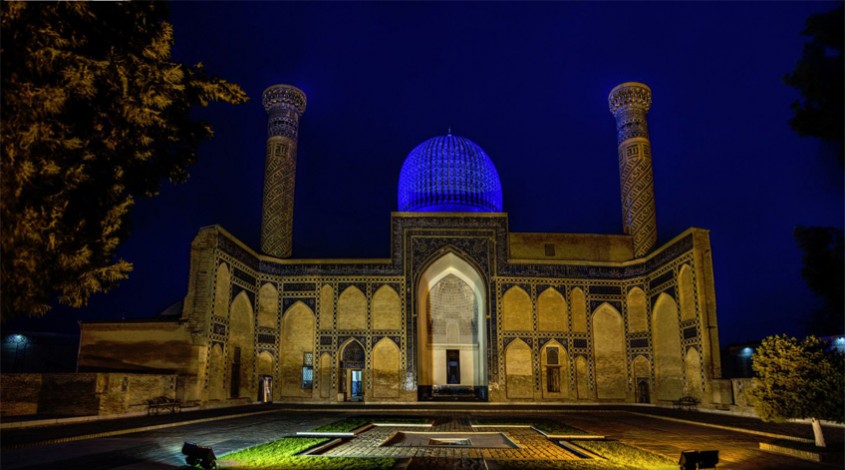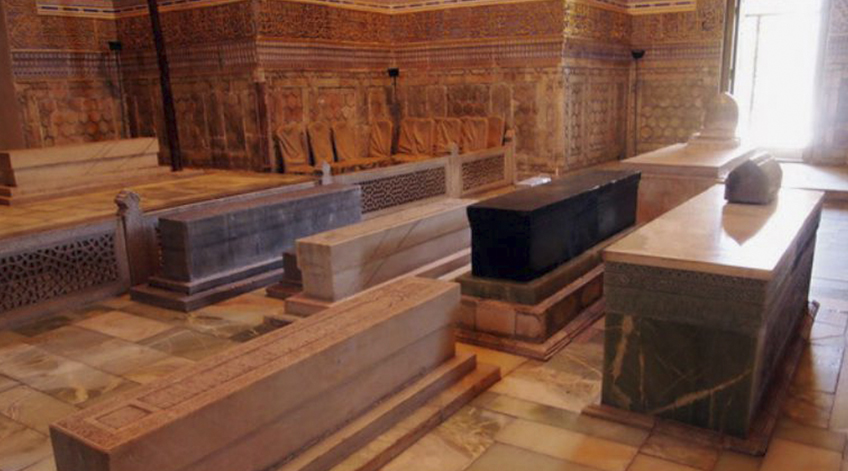

The Gur-Emir Mausoleum is a particularly significant historical attraction of Samarkand. Amir Timur, members of his family, his religious adviser and his famous grandson Mirzo Ulugbek were buried there. Initially, the Gur-Emir was built for Muhammad Sultan, who died in 1403 and was the grandson of Amir Timur.
The mausoleum was constructed just above the grave of Muhammad. Construction of the building on that historical site was completed by Ulugbek. Later the mausoleum became the family crypt for the Timurids.
With will and courage, Tamerlane moved towards China, that was his great goal, but, unfortunately, he was struck by pneumonia. Just a few dozen kilometers away from China Tamerlane died.
Warriors from the army of Tamerlane were frightened by that event. In China, the best doctors of that time treated the corpse of the commander so well that when he was brought to his hometown of Samarkand it seemed that he had died just a day or two ago. He was brought in a coffin made of juniper wood. There was nothing else to do but to bury Timur in the Gur-Emir Mausoleum because there was no time to build a new one.


The Gur-Emir is a monument of a new type. The style was formed in Samarkand as a result of the combination of common interests of builders and creators from Central and Southeast Asia of that time.
During the reign of Ulugbek, a jade tombstone was placed over the grave of Tamerlane. The following words were engraved on it: “Whosoever disturbs my tomb will unleash an invader more terrible than I.”
Coincidentally or not, before the start of the Great Patriotic War, the tomb of Timur was opened — Soviet scientists wanted to make sure that Tamerlane had been really buried there. Although many residents of Samarkand tried to dissuade the scientist, they kept going towards their aim.
People who were excavating the site could not stay near the grave for a long time: some felt short in breath and the others started bleeding. Nevertheless, having overcome all difficulties, scientists opened the grave and convinced themselves that the great Amir Timur had found peace there. Soon after that, the war started.
Once the body was brought back, the Soviet troops decisively rebuffed the Wehrmacht forces forcing them to retreat. Another coincidence? Maybe. However, it is also possible that the words engraved on the tombstone are not just words.
In 1951, the restoration of the mausoleum began. In the process of work, onyx panels, gilding and paintings were restored and improved. The gold leaf ceiling is now decorated with a huge chandelier.
To this day, residents and guests of Uzbekistan visit the site to say prayers and ask Allah to help them, because they believe that this place is holy.
Canaan Travel invites you to spend your vacation in Samarkand and touch the amazing history of the fantastic East.
